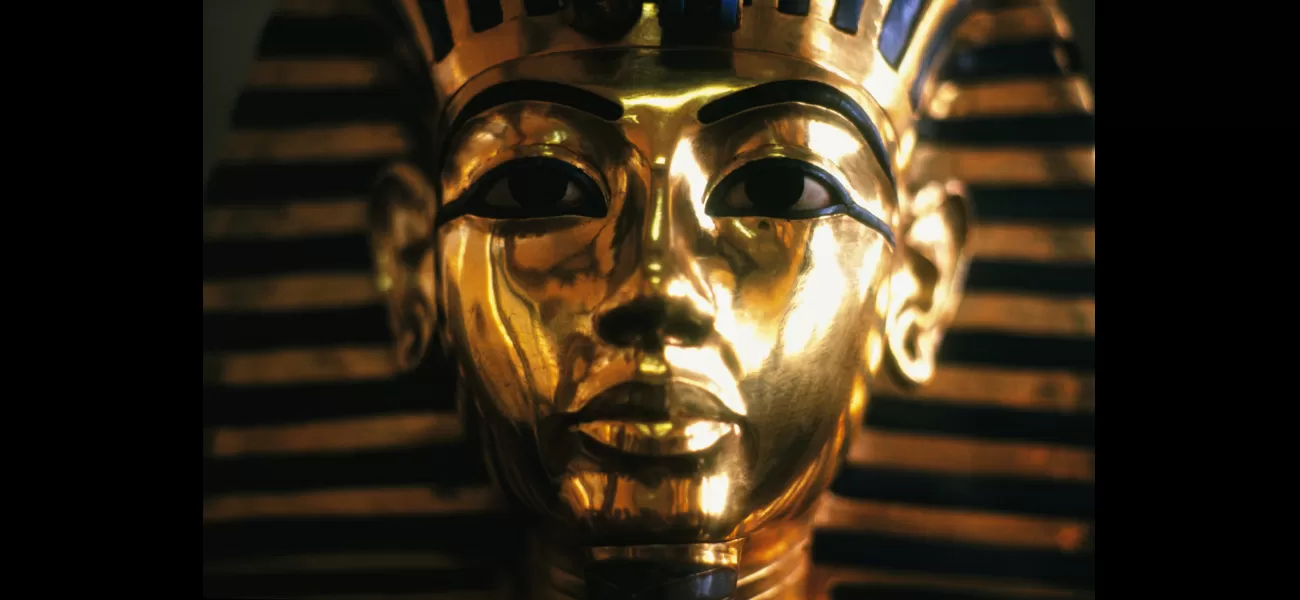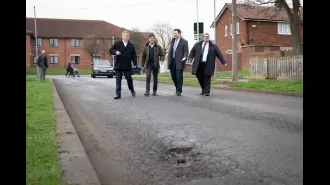After a century, the truth about the infamous "Pharaoh's curse" has been revealed.
Many unexplained deaths have been attributed to it.
April 27th 2024.

There is an ancient legend that tells of a curse that befalls anyone who disturbs the resting place of the Egyptian Pharaoh Tutankhamun. It's said that bad luck, illness, and even death will follow those who dare to enter his tomb. This tale has been circulating for over a century, ever since British aristocrat Lord Carnarvon and his team of archaeologists opened the tomb on November 4, 1922, after it had been sealed for thousands of years.
But now, a scientist claims to have debunked this infamous "Pharaoh's Curse" over 100 years later. According to Ross Fellowes, who published his findings in the Journal of Scientific Exploration, the curse is not as supernatural as it may seem. Instead, it is believed that toxic levels of radiation from uranium and poisonous waste have been lingering inside the tomb since it was sealed over 3,000 years ago.
It is now thought that exposure to these substances may have contributed to the deaths of those who entered the tomb. This would explain the strange and mysterious circumstances surrounding the deaths of several people involved in the excavation. Lord Carnarvon himself died just months after opening the tomb, succumbing to blood poisoning from a mosquito bite. Two of his half-brothers also passed away shortly after visiting the tomb in 1923. The list goes on, with others involved in the discovery meeting their demise due to various causes such as malaria, X-ray exposure, and even murder.
But it's not just those who were directly involved in the excavation who have seemingly fallen victim to the curse. Prince Ali Kamel Fahmy Bey of Egypt was shot dead by his wife in 1923, and Sir Lee Stack, governor-general of the Sudan, was assassinated in 1924. Even Howard Carter, the lead archaeologist, passed away in 1939 from a heart attack after a long battle with Hodgkin's lymphoma.
Despite these unfortunate events, some experts believe that the "curse" may have a more scientific explanation. Dr. Zahi Hawass, a renowned Egyptologist, suggests that the deaths may have been caused by ancient bacteria found inside the tomb. He explains that these bacteria can be harmful to humans, and previous archaeologists who rushed into the tomb without proper precautions may have succumbed to illness and ultimately death.
Dr. Hawass himself takes great care when entering tombs, making sure to let in fresh air and allowing any bad air to escape before exploring. He believes that this is the key to avoiding the so-called "Curse of the Pharaohs." He also points out that the curse only gained widespread attention when Lord Carnarvon granted exclusive rights to the discovery to the Times of London. This led to exaggerated stories being circulated about the supposed curse.
So, it seems that the mysterious curse of Tutankhamun may have a more logical explanation after all. While the legend continues to intrigue and fascinate us, it's important to remember that there is often a scientific reason behind seemingly supernatural events. As Dr. Hawass puts it, "That's the Curse of the Pharaohs," referring to the ancient bacteria that may have caused the deaths of those who entered the tomb. It's a reminder that while the past may hold secrets and mysteries, they can often be solved by looking at them through a scientific lens.
But now, a scientist claims to have debunked this infamous "Pharaoh's Curse" over 100 years later. According to Ross Fellowes, who published his findings in the Journal of Scientific Exploration, the curse is not as supernatural as it may seem. Instead, it is believed that toxic levels of radiation from uranium and poisonous waste have been lingering inside the tomb since it was sealed over 3,000 years ago.
It is now thought that exposure to these substances may have contributed to the deaths of those who entered the tomb. This would explain the strange and mysterious circumstances surrounding the deaths of several people involved in the excavation. Lord Carnarvon himself died just months after opening the tomb, succumbing to blood poisoning from a mosquito bite. Two of his half-brothers also passed away shortly after visiting the tomb in 1923. The list goes on, with others involved in the discovery meeting their demise due to various causes such as malaria, X-ray exposure, and even murder.
But it's not just those who were directly involved in the excavation who have seemingly fallen victim to the curse. Prince Ali Kamel Fahmy Bey of Egypt was shot dead by his wife in 1923, and Sir Lee Stack, governor-general of the Sudan, was assassinated in 1924. Even Howard Carter, the lead archaeologist, passed away in 1939 from a heart attack after a long battle with Hodgkin's lymphoma.
Despite these unfortunate events, some experts believe that the "curse" may have a more scientific explanation. Dr. Zahi Hawass, a renowned Egyptologist, suggests that the deaths may have been caused by ancient bacteria found inside the tomb. He explains that these bacteria can be harmful to humans, and previous archaeologists who rushed into the tomb without proper precautions may have succumbed to illness and ultimately death.
Dr. Hawass himself takes great care when entering tombs, making sure to let in fresh air and allowing any bad air to escape before exploring. He believes that this is the key to avoiding the so-called "Curse of the Pharaohs." He also points out that the curse only gained widespread attention when Lord Carnarvon granted exclusive rights to the discovery to the Times of London. This led to exaggerated stories being circulated about the supposed curse.
So, it seems that the mysterious curse of Tutankhamun may have a more logical explanation after all. While the legend continues to intrigue and fascinate us, it's important to remember that there is often a scientific reason behind seemingly supernatural events. As Dr. Hawass puts it, "That's the Curse of the Pharaohs," referring to the ancient bacteria that may have caused the deaths of those who entered the tomb. It's a reminder that while the past may hold secrets and mysteries, they can often be solved by looking at them through a scientific lens.
[This article has been trending online recently and has been generated with AI. Your feed is customized.]
[Generative AI is experimental.]
0
0
Submit Comment





